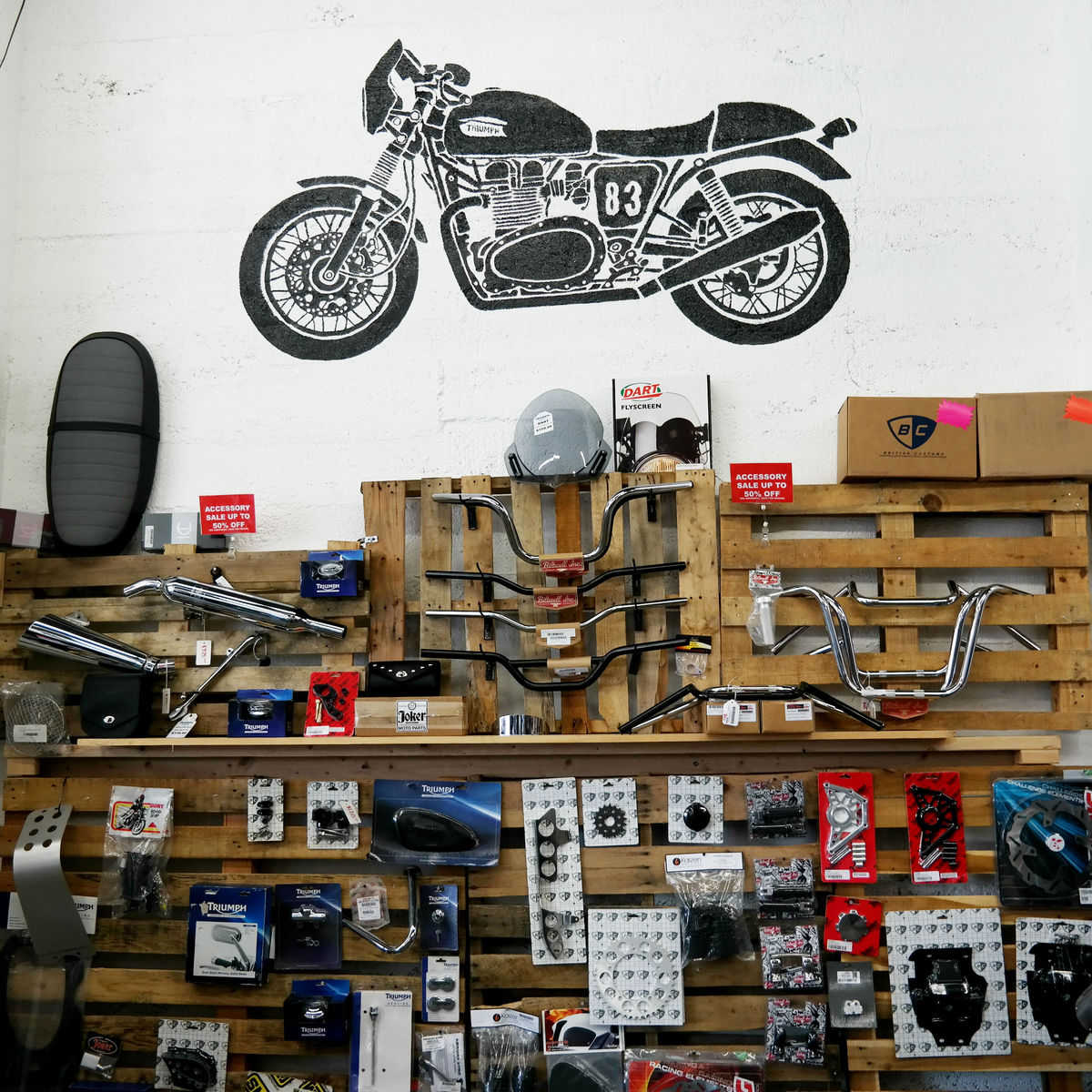Must-Have Motocross Gear: Elevate Your Riding Experience Today
Must-Have Motocross Gear: Elevate Your Riding Experience Today
Blog Article
Understanding the Crucial Parts of a Motorbike: A Comprehensive Guide for Enthusiasts
For bike lovers aiming to elevate their riding experience and ensure their bikes run efficiently, recognizing the vital parts of a motorbike is extremely important. Each element, from the engine's elaborate operations to the essential duty of the braking mechanisms, not just influences performance but additionally security and convenience. This overview will certainly stroll via the fundamental components that every rider need to recognize with, enabling notified choices in both upkeep and possible upgrades. As we start this expedition, one must ask: exactly how does each part connect to produce the seamless trip every enthusiast seeks?
Engine Components

The camshaft plays a crucial function in regulating the timing of the engine's valves, making certain the accurate opening and closing necessary for efficient gas and air consumption, in addition to exhaust expulsion. This timing is important to maintaining ideal engine performance and efficiency. Additionally, the carburetor or fuel shot system, depending upon the bike model, is in charge of mixing air with gas in the correct ratio for combustion.
The cooling system, either air or liquid-based, works to preserve the engine's temperature level within functional limitations, protecting against overheating and making certain long life - motox parts nz. Each element, diligently designed and integrated, adds to the smooth procedure of the engine, defining the motorbike's power outcome and overall efficiency
Transmission System
Essential to the bike's performance, the transmission system makes sure efficient power transfer from the engine to the wheels. This system makes up several critical components, consisting of the clutch, gearbox, and last drive, each playing a vital function in translating the engine's power right into movement. The clutch, typically operated by a hand lever, offers to involve and disengage the engine from the transmission, permitting smooth gear adjustments and regulated velocity.
The transmission, commonly described as the transmission proper, has a set of gears that riders can manually move through to readjust the bike's speed and torque outcome. These gears are arranged in a series that makes it possible for the motorcycle to increase efficiently and maintain optimal engine performance throughout various speeds. Many bikes make use of a consecutive transmission, requiring the cyclist to change gears in an established order.
Braking Mechanisms
While understanding the transmission system is vital to using a motorcycle's power, equally important is the capacity to manage and quit that power properly, which is where braking systems check it out enter into play. Brakes are crucial for safety and security and efficiency, supplying the motorcyclist with the necessary control to browse various terrains and problems. Normally, motorcycles feature 2 sorts of stopping systems: disc brakes and drum brakes.
Disc brakes are extra widespread in modern-day bikes due to their exceptional efficiency. This system uses much better heat dissipation, constant efficiency, best helmet for women and improved quiting power, specifically in damp conditions.
Conversely, drum brakes, though less typical, are still found in some motorcycles. They function by pressing brake footwear against the inner surface area of a drum affixed to the wheel. While generally much less efficient in warm dissipation and quiting power, drum brakes are less complex and more cost-efficient.
Comprehending these stopping systems' subtleties permits motorcyclists to preserve their motorbikes properly and value the engineering that makes certain efficient and safe stopping.
Suspension and Guiding
Suspension and steering systems are essential components that substantially influence a motorcycle's handling and ride convenience. The shock absorber, consisting of forks at the front and shock absorbers at the back, soaks up roadway abnormalities, improving stability and control. Front forks, inverted or generally telescopic, compress and rebound to alleviate effects, while rear shock absorbers preserve tire contact with the roadway, important for traction and safety.
Steering, focused around the handlebars, connects the biker to the bike's directional control. The steering head bearings ensure smooth operation, permitting specific ability to move. Proper positioning and upkeep of these bearings are crucial for foreseeable guiding response and lowering rider exhaustion.
The suspension's adjustability is an additional crucial element; preload, damping, and rebound setups enable personalization to match numerous riding styles and conditions. This flexibility is necessary for maximizing efficiency, whether navigating urban roads or taking on sturdy routes. Technologies like electronic suspension systems supply real-time changes, enhancing adventure top quality throughout diverse terrains.

Electric Equipments
After guaranteeing a controlled and smooth ride with reliable suspension and steering systems, interest turns to the electrical systems, a critical aspect of contemporary bikes. These systems play an essential duty not just in starting the engine yet also in powering numerous components that boost the capability and safety of the motorcycle.
At the heart of a motorbike's electric system is the battery, which stores electric power required for beginning over here the engine and powering auxiliary systems - motorcycle parts nz. The alternator or generator, coupled with the rectifier-regulator, guarantees the battery remains billed while the bike is in procedure, transforming power into electrical power and keeping voltage degrees
The ignition system, an additional essential part, is liable for stiring up the air-fuel mixture in the engine's cyndrical tubes. Modern bikes frequently use an electronic ignition system, providing greater efficiency and integrity compared to traditional systems.
Lights systems, consisting of headlights, tail lights, and signs, are also crucial, guaranteeing exposure and safety for the rider. Added digital components such as sensing units, control units, and shows contribute to advanced functions like fuel shot monitoring, anti-lock braking systems (ABS), and electronic control panels, even more enhancing the riding experience.
Verdict
A comprehensive comprehension of a motorcycle's vital components, including the engine, transmission system, braking devices, suspension, steering, and electric systems, is essential for fanatics intending to enhance safety and security, efficiency, and comfort. Proficiency of these components enables notified decisions pertaining to upkeep and upgrades, ultimately enhancing the riding experience. By integrating this understanding, cyclists can ensure their bikes run at peak performance and reliability, therefore maximizing both satisfaction and long life of their cars.
For motorcycle enthusiasts looking to elevate their riding experience and guarantee their bikes run efficiently, recognizing the crucial components of a motorcycle is critical.Integral to the bike's capability, the transmission system ensures reliable power transfer from the engine to the wheels.While comprehending the transmission system is essential to taking advantage of a motorbike's power, similarly essential is the ability to regulate and quit that power effectively, which is where braking systems come into play. Typically, motorcycles feature 2 types of braking systems: disc brakes and drum brakes.
A detailed comprehension of a motorcycle's vital elements, consisting of the engine, transmission system, braking mechanisms, suspension, steering, and electric systems, is crucial for lovers aiming to enhance convenience, safety and security, and performance.
Report this page